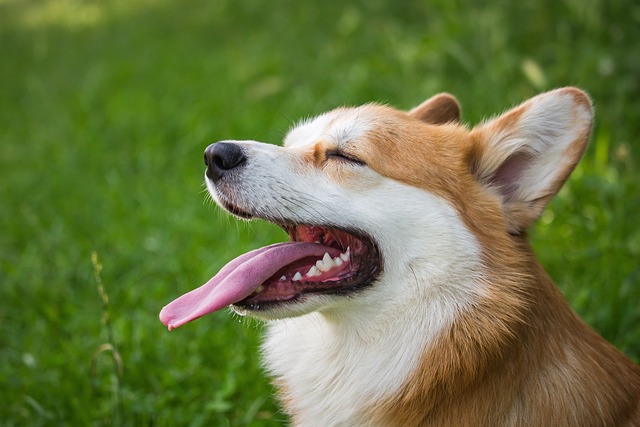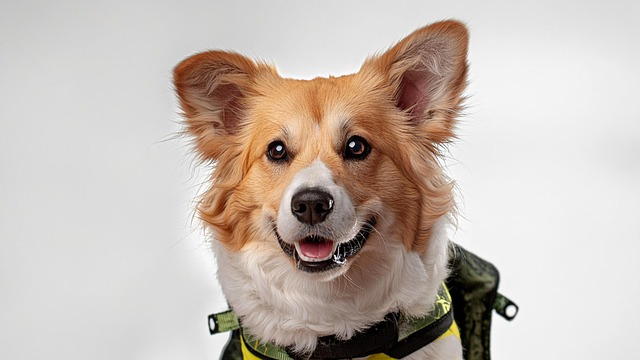
What vitamin is good for dogs' skin
Seeing your dog constantly scratch or noticing dry, flaky skin can make you wonder if a simple vitamin might be the solution.
If you’re like most dog owners, summer probably makes you wonder just how to keep your furry friend comfortable and safe during those scorching hot days. Maybe you’ve seen people spraying their dogs with water in hot weather and thought, “That looks refreshing—should I try it too?” It’s a reasonable idea, but before you grab the garden hose or a spray bottle, it’s worth taking a closer look at how dogs handle heat, the possible risks of water spraying, and some proven alternatives for cooling them down. After all, your dog depends on you to make the best choices for their well-being, especially when temperatures soar.
Let’s start by understanding how dogs actually deal with heat. Unlike humans, who can sweat through pores all over our bodies, dogs are built a bit differently. Their main way of cooling off is by panting, which helps evaporate moisture from their tongues, nasal passages, and the lining of their lungs, carrying heat away from their bodies. Dogs do have sweat glands, but these are limited mostly to their paw pads. That means their bodies aren’t as effective at self-cooling as ours, and they can become overheated much more quickly. It’s also why you’ll see your dog searching for cool surfaces or shady spots—not just for comfort, but as a crucial strategy to avoid heat stress.
Given these differences, the idea of spraying dogs with water in hot weather might seem like a quick fix, but it’s not always as simple—or as safe—as it appears. First, let’s talk about the potential risks you might not have considered. For some dogs, especially those unused to sudden sprays, being doused with cold water can be startling or even frightening. It’s not uncommon for a dog to react negatively, which can lead to stress or a sense of distrust. More importantly, if water is sprayed in large amounts or with high pressure, it may cause shock to their system—particularly if the dog is already overheated. There’s also a risk of trapping heat: when a dog’s thick fur gets soaked without proper air circulation, the wet layer can actually insulate heat close to the skin, making cooling less effective and sometimes creating the opposite effect you intended.
Another aspect to keep in mind is that not all dogs tolerate water the same way. Some breeds, like retrievers or spaniels, generally love water play, but others may become anxious or stressed. Dogs with dense double coats, such as Huskies or Malamutes, are especially at risk of having wet fur trap heat against their bodies. And let’s not forget older dogs, puppies, or those with health issues—they may be even more sensitive to abrupt temperature changes.
So, is it safe to spray dogs with water when hot? The answer isn’t a straightforward yes or no. Occasional gentle misting can offer some relief, particularly if your dog enjoys it and you avoid the face, ears, and direct high-pressure sprays. But as a primary cooling method, it’s far from ideal. If you want to support your dog’s health and comfort, let’s look at some safer and more effective alternatives that veterinarians and canine experts recommend.
One of the best things you can do is to ensure your dog always has access to shade and fresh, cool water. It might sound basic, but these two elements are foundational in preventing heat stress. Shade, whether from a tree, canopy, or even a patio umbrella, helps your dog avoid direct sunlight and reduces their overall body temperature. Fresh water allows for both hydration and, if you have a shallow kiddie pool or a bowl big enough for a quick dip, some playful cooling. Just make sure the water is changed frequently so it stays cool and clean.
Cooling mats and elevated beds are another fantastic option. These products are designed to draw heat away from your dog’s body, and many dogs naturally seek them out during hot spells. They’re widely available in pet stores, and some even have self-cooling gel that stays several degrees below room temperature. Controlled misting—using a gentle spray bottle or a low-pressure hose attachment, never directly at your dog’s face—can be helpful, particularly for short-coated breeds. But always watch for signs of discomfort and stop if your dog seems stressed.
Beyond these products, timing is everything. Plan walks and playtime for early mornings or late evenings when temperatures are lower. Avoid hot pavement, which can burn sensitive paws, and always have water on hand during outdoor adventures. For dogs with thick or dark coats, regular brushing can help remove excess fur, improving air circulation and reducing the risk of overheating. And if your pup loves water, supervised swimming sessions in a safe pool or lake can be both fun and cooling—just be mindful of local rules and water safety.
Now, let’s talk about recognizing heat stress. You might be wondering what signs to look out for. Heavy panting, drooling, glazed eyes, lethargy, unsteady movement, and even vomiting can all be indicators that your dog is struggling with the heat. In severe cases, heatstroke can set in quickly and is a genuine emergency requiring immediate veterinary attention. If you ever notice these warning signs, move your dog to a cool, shaded area, offer fresh water, and contact your veterinarian right away. As a precaution, it’s good to know where your nearest emergency animal clinic is located—just in case.
So, what’s the bottom line when it comes to spraying your dog with water in hot weather? It might seem like a harmless solution, but there’s more to consider than meets the eye. While a little gentle misting can be okay for some dogs, it shouldn’t be your primary way of keeping them cool. Instead, focus on providing shade, fresh water, cooling mats, and controlled environments. Pay attention to your individual dog’s needs, preferences, and health status. And above all, stay alert for signs of heat stress so you can act quickly if needed.
Summer can be a joyful, active time for you and your dog, but it also brings unique risks—especially as heat waves become more common in many parts of the United States. By understanding how dogs regulate their temperature and by choosing cooling methods that truly support their well-being, you’re taking an important step toward being a responsible, caring pet owner. If you ever have doubts or concerns about the best way to help your dog beat the heat, don’t hesitate to reach out to your veterinarian for tailored advice. After all, every dog is unique, and a little extra effort goes a long way toward keeping those tails wagging safely all summer long.

Seeing your dog constantly scratch or noticing dry, flaky skin can make you wonder if a simple vitamin might be the solution.

If you’re a new dog parent in the US—maybe you’re sitting on your Portland apartment couch, staring at your 1-year-old Australian Shepherd

If you’re a new dog parent in the US—maybe you’re sitting on your Atlanta apartment floor, holding your 6-week-old Beagle puppy, Daisy, who’s curled up in your lap

If you’re a new dog parent in the US—maybe you’re standing in your Denver apartment’s kitchen, staring at a bag of high-quality puppy kibble and a bottle

Seeing your puppy grow daily is amazing, and it’s natural to want to give them every advantage, including supplements.

Brown stains on white dog fur aren’t just unsightly—they can also hint at underlying issues like tear duct irritation or poor grooming habits, which matter even more when you’re following local pet care laws.